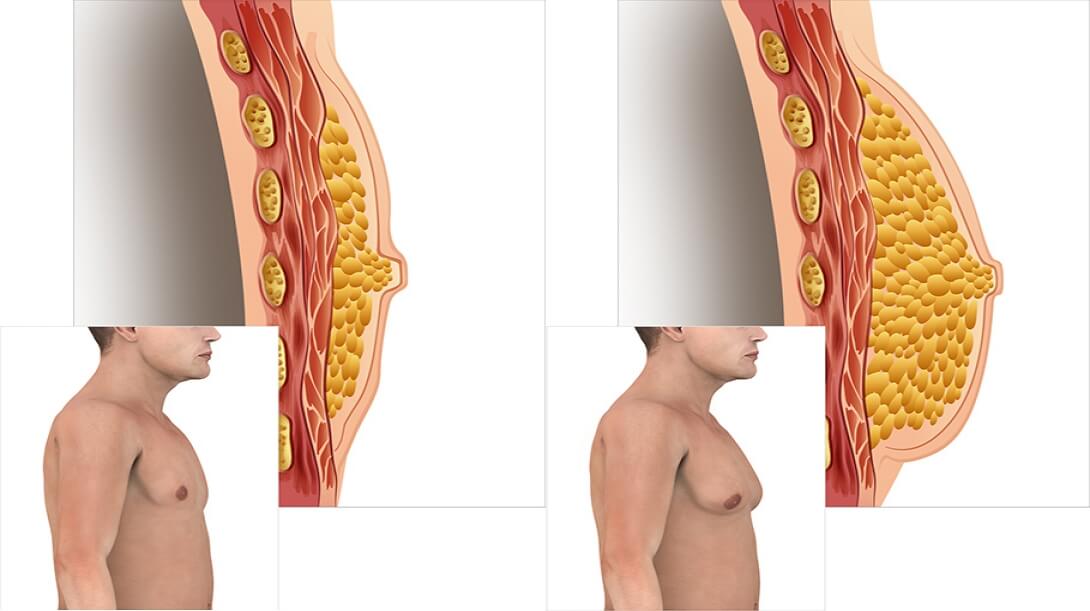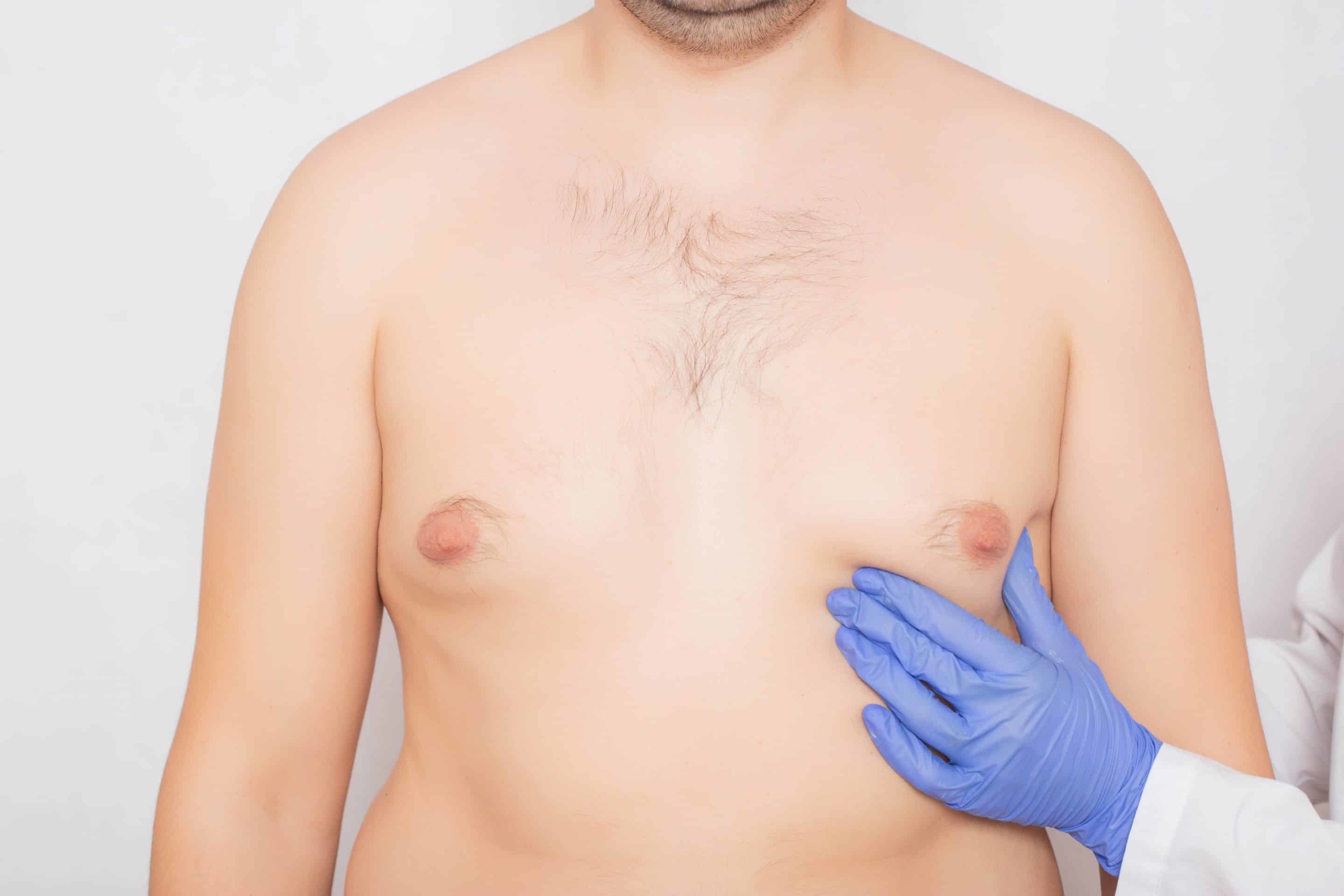Calls for Ukraine
Calls for Europe
Calls for USA

Gynecomastia is the most common form of male breast enlargement, affecting up to 65 % of men and boys at some stage of life. While it is a benign condition, it often causes emotional and psychological distress. Many men seek treatment to improve self-esteem and comfort, and it is important to evaluate the underlying gynecomastia causes, since hormonal disorders or systemic diseases can contribute to breast tissue growth.
Gynecomastia is an abnormal benign enlargement of one or both mammary glands in men resulting from abnormal growth of breast tissue. The main cause of the pathology is a hormonal imbalance between estrogens and androgens (male and female sex hormones).
Gynecomastia is a benign overgrowth of glandular breast tissue in men. It arises when there is an imbalance between estrogens and androgens - for example, increased estrogen production, decreased testosterone levels or heightened sensitivity of breast tissue to hormones. The condition can be physiological (newborns, pubertal boys or older men), or secondary to liver disease, kidney failure, thyroid dysfunction, testicular tumors, obesity, or medications such as anabolic steroids, anti-androgens and some antidepressants. Identifying the underlying gynecomastia causes is essential for selecting the right gynecomastia treatment.

There are also differences in the appearance of the breasts in these two conditions. With an excess of fat, the skin of the mammary glands is usually saggy, breasts look like a fold. In men with gynecomastia, mammary glands are more rounded and dense, similar to women’s. Also, due to excess estrogen, nipples can be enlarged.
An additional sign of gynecomastia is breast pain during palpation. With hormonal changes, a transformation of the breast tissue occurs, due to which it becomes sensitive. Excess fat in mammary glands does not cause these symptoms because it is no different from adipose tissue elsewhere in the body.
And the last specific sign of gynecomastia is excretion from the nipples. However, it is worth noting that this symptom is also characteristic of other diseases, such as pituitary tumors, breast cancer, and testosterone deficiency. Therefore, when excretion from nipples occurs, it is better to consult a doctor.
By itself, gynecomastia is not dangerous to health, but it can be a manifestation of an underlying disease requiring treatment. For example, hormonal imbalances that can cause abnormal breast growth in men can be related to dysfunction of the thyroid, testicles, or pituitary gland. Therefore, the problem cannot be ignored.
As such, methods for the prevention of gynecomastia do not exist. A healthy balanced diet, physical activity, and avoidance of bad habits help to maintain a normal balance of hormones in the body. Sometimes the development of gynecomastia is associated with the use of drugs such as sex hormone preparations, anabolic steroids, some antidepressants, and anticancer drugs. Before starting treatment with such drugs, it is worth discussing possible side effects with your doctor.
There are two main forms of gynecomastia: true and false (pseudogynecomastia). In the first case, the mammary glands in a man increase as a result of hyperplasia (increase in the number of cells) of the lobar milk ducts and hypertrophy (increase in cell size) of the connective tissue of the breast. With pseudogynecomastia, the volume of the mammary glands becomes larger due to excessive deposition of fat in the subcutaneous tissue. This usually happens with obesity.
Some doctors distinguish 4 types of gynecomastia:
With all of these types, there is an increase in breast size. Accurate determination of the type of gynecomastia allows the doctor to choose the most effective treatment method.

Men may experience unilateral or bilateral enlargement; bilateral cases may be symmetrical or asymmetrical. Newborns often have transient gynecomastia from maternal hormones. Pubertal gynecomastia peaks around ages 13–14 and usually resolves within 6–24 months. In adults, risk factors include hypogonadism, chronic liver disease, thyroid disorders, testicular tumors, obesity and medications. Symptoms include palpable masses, tenderness, nipple discharge and emotional distress. Evaluation should include a thorough history, physical examination, and sometimes imaging and hormone testing.
Translated from Latin, gynecomastia (gynes – woman, mastos – breast, mammary gland) means feminine breast. Therefore, this disease is considered purely male. However, relatively recently, scientists have found that women also have gynecomastia changes in the mammary glands. They are rarely detected – in 0.15% of cases of all lesions of the female breast.
Gynecomastia-like changes typically occur in young women (mean age of onset 32 years) and are small, palpable masses 3 to 5 cm in diameter. Mammography usually shows negative results or non-specific density. Morphologically, gynecomastia in women corresponds to fibrocystic changes, which were previously called mastopathy.
The symptoms of gynecomastia are quite specific and have already been described above. The first signs of pathology include the appearance of a small seal in the nipple area. As gynecomastia progresses, tissue grows around the areolas. The nipples increase in size and become cone-shaped. Breast sensitivity varies. Some men complain of pain when touching the mammary glands, others experience discomfort even when the chest is rubbed against clothing.

As a rule, for the doctor to make a diagnosis, it is enough to study the patient’s medical history and physical examination, during which the specialist assesses the condition of the mammary glands, abdominal cavity, and genital organs. Since any lumps in the breast can be a sign of breast cancer, ultrasound, and mammography are also prescribed. If the examination reveals suspicious signs, the doctor may recommend an MRI and a biopsy (taking a small area of the neoplasm for histological analysis).
Laboratory tests typically include serum testosterone and estradiol levels, along with luteinising hormone (LH), follicle‑stimulating hormone (FSH) and β‑human chorionic gonadotropin (β‑hCG). Additional tests may include prolactin, thyroid‑stimulating hormone, liver and kidney function, and tumor markers to screen for underlying causes. A tailored approach is essential since hormone imbalances vary widely between patients.
The choice of treatment method depends on the type and severity of the pathology. Pubertal (adolescent) gynecomastia resolves on its own within a few weeks to 3 years in about 90% of patients. Breasts larger than 4 cm in diameter may not completely regress.
In some cases, breast reduction in a man can be done by identifying and treating the underlying disease. If the cause of gynecomastia is hypogonadism (primary or secondary), testosterone replacement therapy is prescribed.
For patients with idiopathic (with no known cause) gynecomastia or with residual (after the underlying cause has been treated) gynecomastia, medical therapy or surgery may be considered.
The main factor that influences the choice of treatment method is the duration of the condition. The likelihood that drug therapy will help reduce breasts in the late fibrotic stage (with a disease duration of 12 months or more) is very small. Therefore, drugs are used only in the early stages of gynecomastia.

Photos before and after surgery for the treatment of gynecomastia
There are currently two options for surgical treatment:
Previously, mastectomy was a rather complicated and traumatic operation. With the development of plastic surgery, minimally invasive techniques have appeared in which glandular tissue is removed through small punctures. After such an operation, there are no noticeable scars and the patient does not need a long recovery.
The cost of the operation depends on the chosen surgical technique. Breast liposuction for false gynecomastia usually costs less than mastectomy. Prices for the procedure start at $750.
The cost of a mastectomy largely depends on the degree of prestige of the clinic and the fee of the plastic surgeon. Examples of prices for the treatment of gynecomastia in various clinics around the world:
Medical coordinators of MedTour will help you choose the best clinic for the treatment of gynecomastia, taking into account your budget and personal wishes.
Gynecomastia is not cancerous, and many men live with it without medical intervention. However, cosmetic concerns and psychological distress lead many to seek treatment. If the condition is stable, painless and not linked to serious disease, observation may suffice. Yet modern minimally invasive surgeries offer effective solutions for those who wish to improve their appearance and confidence.
The MedTour platform was created specifically to make it easier for patients to access the most modern and high-quality medical services. We cooperate with a huge number of clinics around the world. The medical coordinator of MedTour will help you choose the best medical center for the treatment of gynecomastia, taking into account your individual needs and wishes.
If you suspect gynecomastia, you should first consult an endocrinologist. An endocrinologist will assess the level of hormones in the body and determine the cause of the disease. In the early stages, drug therapy is possible. The surgical treatment of gynecomastia is handled by a plastic surgeon. Depending on the type of pathological condition, the doctor will select the most effective surgical technique.
On the MedTour platform, you can find a large number of doctors who treat gynecomastia. Our medical coordinator will help you find the best specialist.
Please rate the work of MedTour
